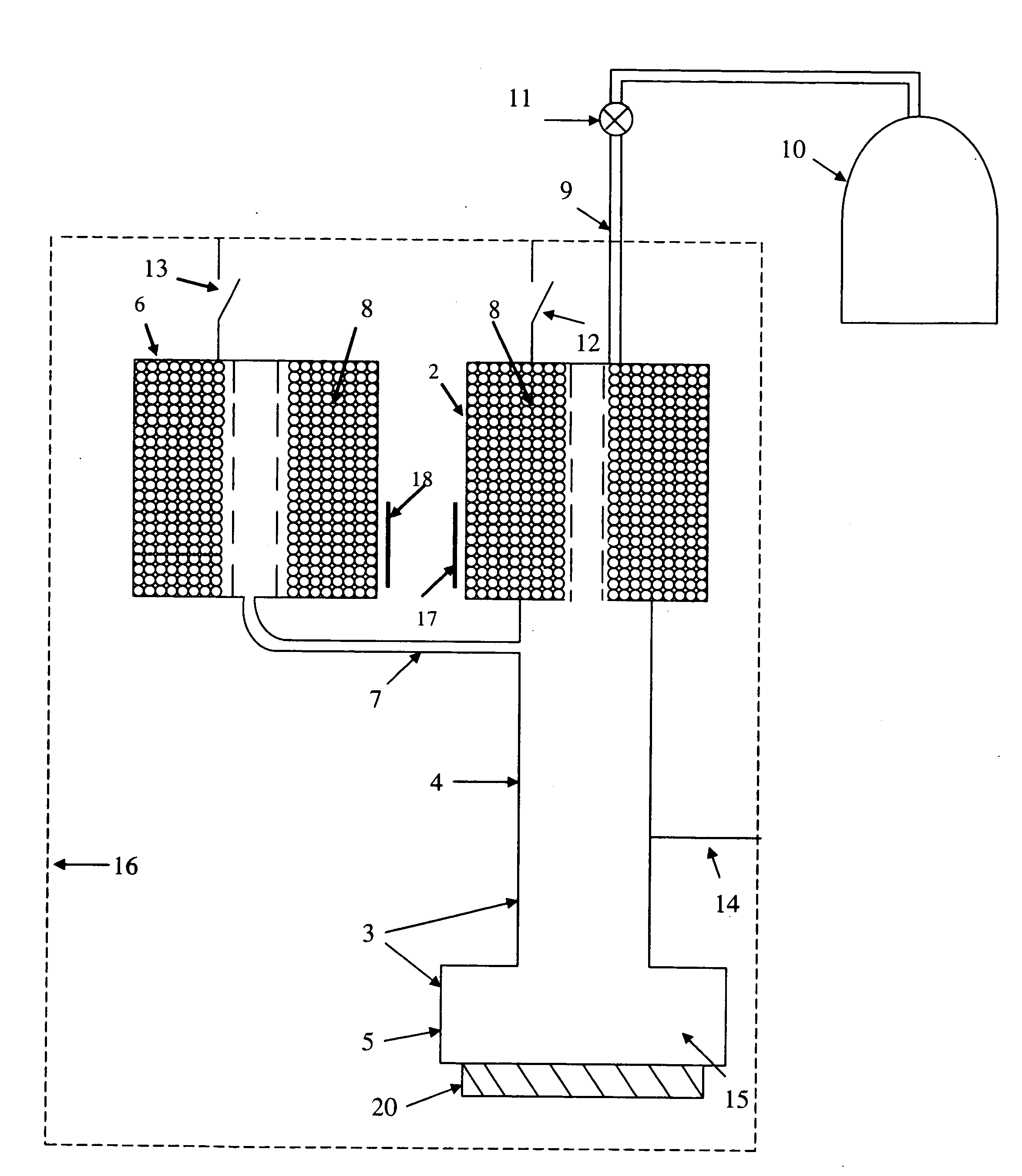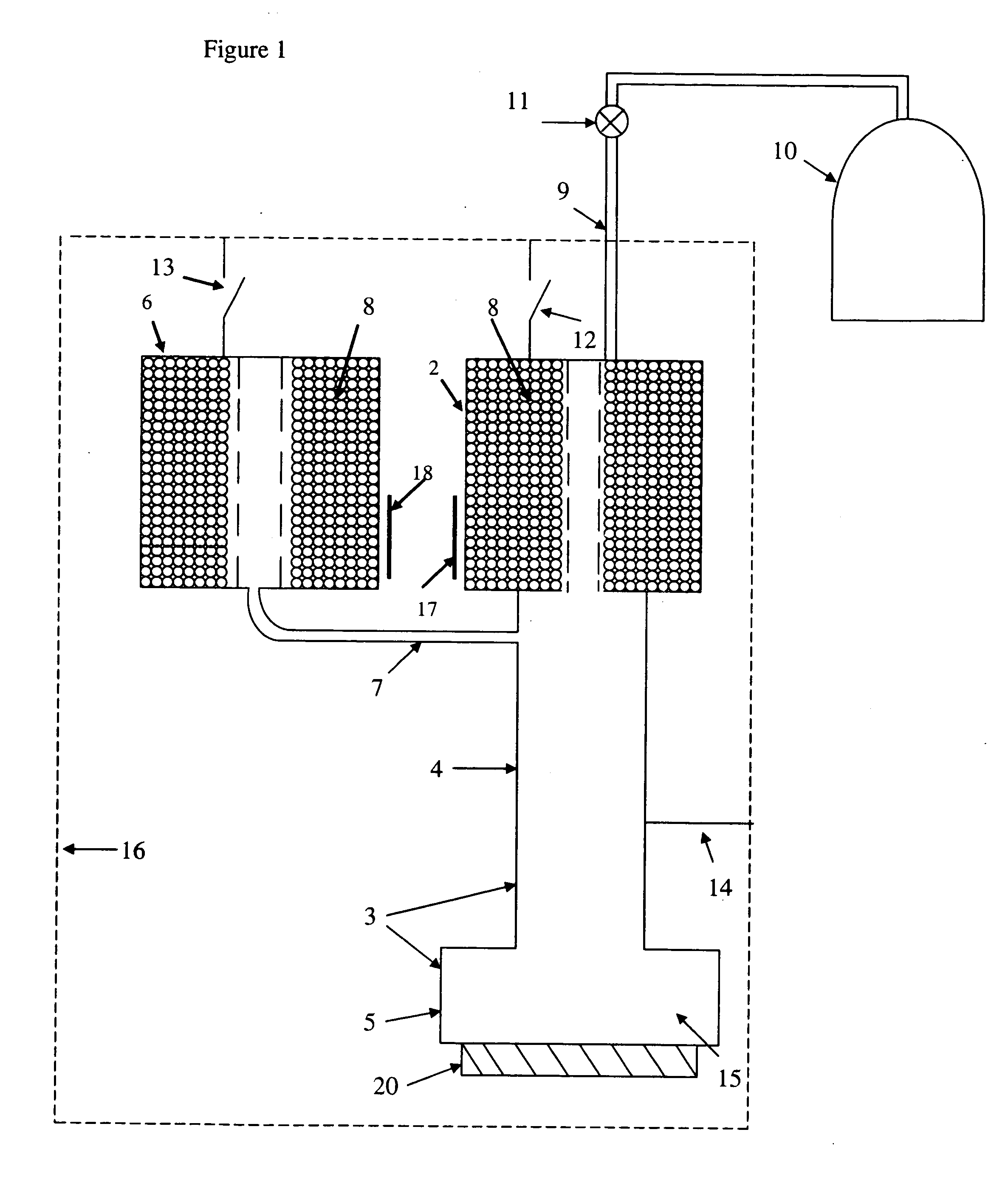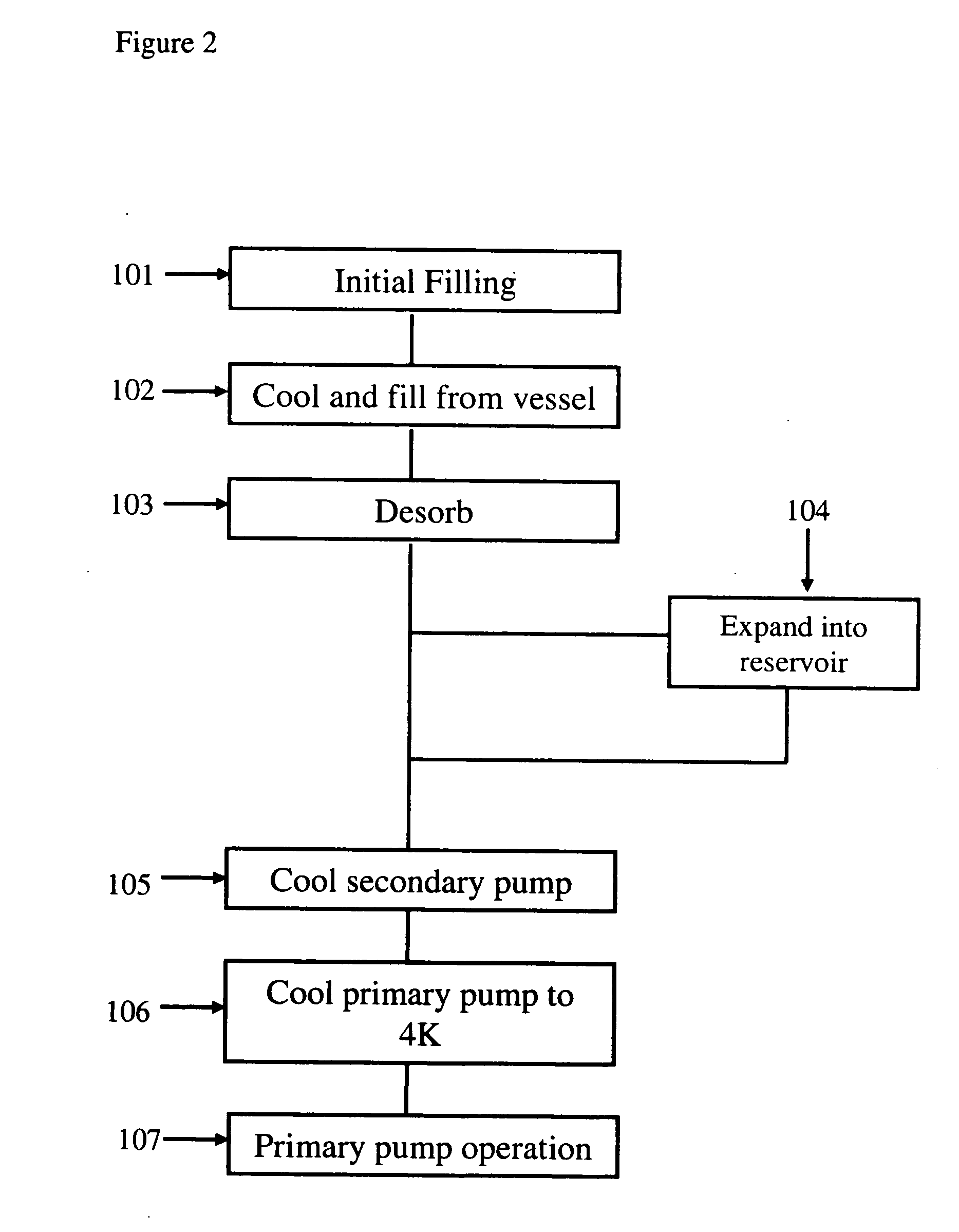Method of operating an adsorption refrigeration system
a refrigeration system and refrigeration system technology, applied in sustainable buildings, energy-efficient heating/cooling, lighting and heating apparatus, etc., to achieve the effect of dampening any temperature instability within the system, improving the temperature stability, and poor thermal conductivity of the coolant gas
- Summary
- Abstract
- Description
- Claims
- Application Information
AI Technical Summary
Benefits of technology
Problems solved by technology
Method used
Image
Examples
Embodiment Construction
[0053]FIG. 1 shows a schematic representation of a first example system which is generally indicated at 1. A primary adsorption pump 2 is connected to a primary chamber 3, the primary chamber comprising a primary pumping line 4 and a primary pot 5. As can be seen, the primary pumping line is effectively a large diameter tube (typical dimensions being a diameter of about 8 millimetres and a length of about 200 millimetres or less). At an upper end of the primary pumping line 4 is positioned the primary adsorption pump 2, and at a lower end is located the primary pot 5. This means that any gas within the pot 5 is in fluid communication with the interior of the primary adsorption pump 2. A secondary adsorption pump 6 is provided, this being placed in fluid communication with the interior of the pumping line 4 by virtue of a high fluid impedance conduit 7 in the form of a stainless steel capillary. This has a diameter of about 1 millimetre and a length of about 200 millimetres or less. ...
PUM
| Property | Measurement | Unit |
|---|---|---|
| Temperature | aaaaa | aaaaa |
| Temperature | aaaaa | aaaaa |
| Pressure | aaaaa | aaaaa |
Abstract
Description
Claims
Application Information
 Login to View More
Login to View More - R&D
- Intellectual Property
- Life Sciences
- Materials
- Tech Scout
- Unparalleled Data Quality
- Higher Quality Content
- 60% Fewer Hallucinations
Browse by: Latest US Patents, China's latest patents, Technical Efficacy Thesaurus, Application Domain, Technology Topic, Popular Technical Reports.
© 2025 PatSnap. All rights reserved.Legal|Privacy policy|Modern Slavery Act Transparency Statement|Sitemap|About US| Contact US: help@patsnap.com



